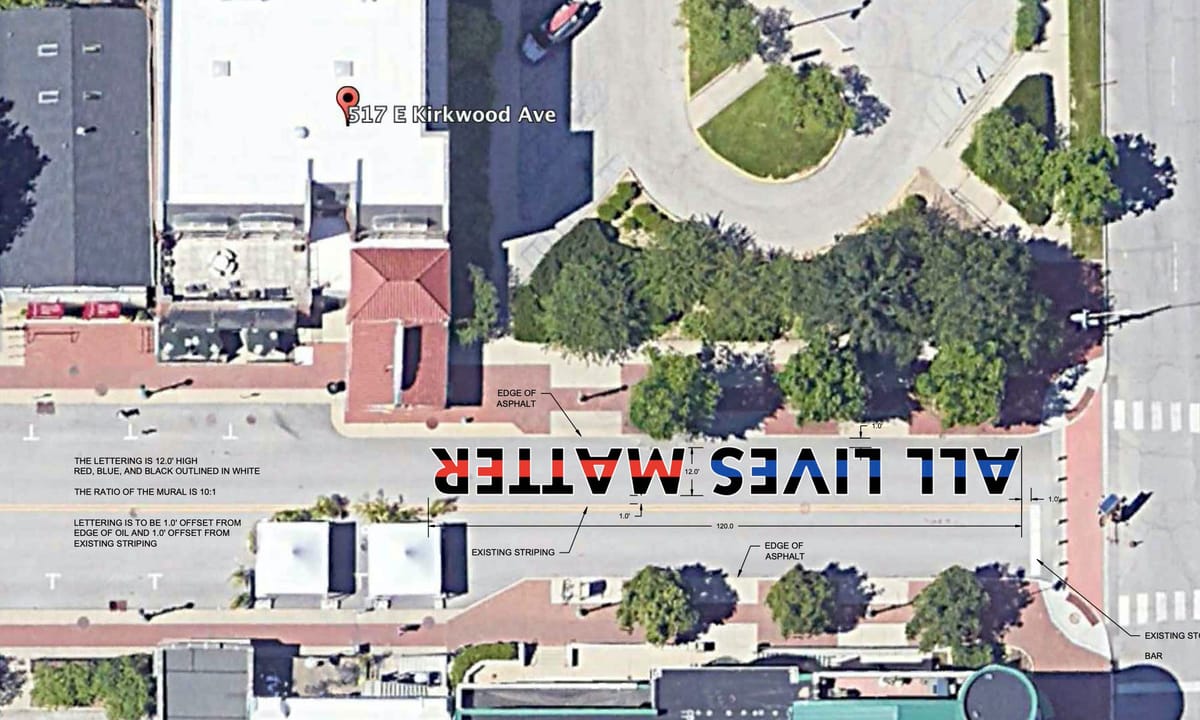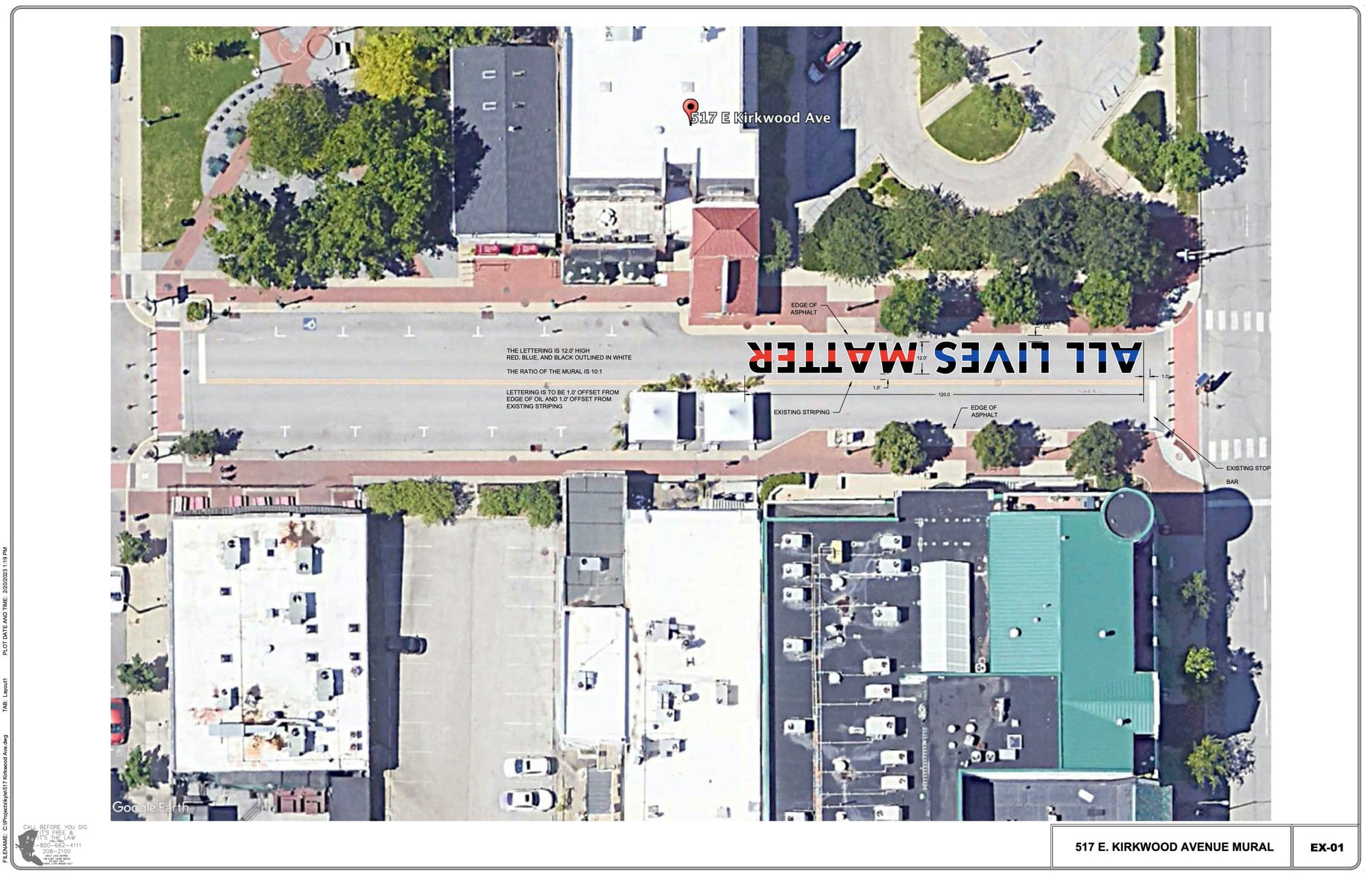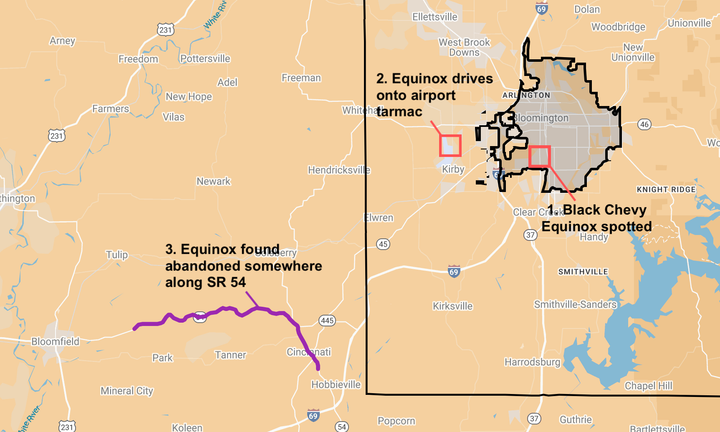Turning Point asks judge to reconsider ruling in Bloomington mural case
In the last month, there’s been new activity in a free speech lawsuit filed by Turning Point USA against Bloomington, after a court's ruling in late July found mostly in favor of the city. The IU Chapter of Turning Point USA wanted to paint an “All Lives Matter” mural on Kirkwood Avenue.


In the last month, there’s been new activity in a three-year-old free speech lawsuit filed by Turning Point USA against the city of Bloomington, after a federal judge’s ruling in late July found mostly in favor of the city’s position.
The Indiana University Chapter of Turning Point USA wanted to paint an “All Lives Matter” mural on Kirkwood Avenue, but the city of Bloomington rejected the application, which led to the lawsuit. Turning Point’s request to paint its mural came after the city allowed three “Black Lives Matter” murals on city streets—which the judge has ruled amount to speech by Bloomington’s city government. That means the court has concluded that allowing the BLM murals did not create a public forum, requiring alternate viewpoints to be expressed.
On Aug. 22, Turning Point filed a motion with the court, asking the judge to reconsider the court’s July 21 order.
The judge’s order concluded that a public art policy developed by Bloomington, which prohibits speech in semi-permanent street art, is a permissible content-neutral safety measure. That is, the judge rejected Turning Point’s claims that its First Amendment free speech rights were violated. Turning Point contends that the judge made a factual error—which is the logic behind the motion for reconsideration.
The lawsuit’s latest filing came just days after the Sept. 10 assassination of Charlie Kirk, the founder of Turning Point USA, which has focused national attention on questions of speech and expression, the subject matter of the lawsuit.
On Sept. 12, Turning Point filed its reply to the city of Bloomington’s response to the motion for reconsideration. A bench trial is currently scheduled for Nov. 17—but that’s not related to the recent motion for reconsideration.
The trial was set to hear the one remaining question not decided in the judge’s July 21 order on the motions for summary judgment. Not addressed in the order was whether Bloomington’s public works director and city attorney engaged in viewpoint discrimination in 2021, when they denied Turning Point’s initial request to paint an “All Lives Matter” mural. That denial pre-dated Bloomington’s policy on art in the public right-of-way.
Unlike an appeal, a motion to reconsider asks a judge to revisit their own conclusion. Motions to reconsider are not very common. In opposing Turning Point’s motion, the city of Bloomington points out that federal trial rules make motions to reconsider possible to deal with situations that arise only rarely—because of mistakes that are “not of reasoning but of apprehension.”
This round of the litigation is based on the city of Bloomington’s policy on private art in the public right-of-way, which was developed only under a court order, after the city disallowed the proposed Turning Point mural in 2021. The policy bans “speech” in such art, which is defined as including words, letters and universally recognized symbols.
Turning Point contends that the judge did not apprehend the inclusion of universally recognized symbols in the proposed mural design. Turning Point says that the blue and red lines in the design are universally recognized symbols in honor of police and fire safety officers, respectively. In a footnote to the order, the judge spells it out (emphasis added in italics): “As detailed above, the provision [of Bloomington’s policy] also bars the use of numbers and universally recognized symbols, but neither of these appeared in Plaintiffs’ proposed mural. … ”
Turning Point notes that the designated evidence in the case—which included the drawing of the proposed mural and a description that says the words are “bisected by red and blue lines to show support for first responders”—was accepted by both sides without dispute. Turning Point also says that its arguments repeatedly referred to the “words and symbols” of the design, not just the words.
Turning Point says that as a result of the alleged factual error, the judge had based the ruling on just the “words and letters” from the section of the city’s art policy that defines “speech,” and not the operative part of the policy, which bans all “speech.” When the judge omitted symbols from consideration, that impacted the legal conclusion, Turning Point says, because the policy includes words and symbols, which effectively makes the city’s policy content-based.
That factors into what Turning Point contends is a “manifest error of law” made by the judge. Because the judge did not tailor the analysis to the actual provision of the policy that was in dispute—which was the entirety of the anti-speech provision, not just the part about words and letters—that was an error of law, according to Turning Point.
Once the city’s policy is determined to be content-based, which it has to be, according to Turning Point, then, the argument continues, it cannot withstand “strict scrutiny.” That kind of scrutiny is the toughest constitutional test, which requires the government to show that a law serves a compelling interest, and is narrowly tailored as the least restrictive means for achieving that interest.
For its part, the city of Bloomington says in its response to the motion that Turning Point never previously made an argument based on the inclusion of universally recognized symbols, and that to try to make one now makes it a new theory that was introduced too late. Bloomington says that Turning Point is just trying “to take another crack at the issue by presenting new arguments or theories.”
The suit was initially filed in the Monroe County circuit court in February 2022, but then removed to federal court because of the constitutional claim about free speech.
Documents
- 2025-07-21 Judge’s order on cross motion for summary judgement
- 2025-08-22 Turning Point’s brief in support of reconsideration
- 2025-09-05 Bloomington’s response to motion for reconsideration
- 2025-09-12 Turning Point’s brief in reply to Bloomington’s response
Previous B Square coverage
- With free speech lawsuit still pending Bloomington adopts 'Wrapped in Love' display as City’s event (June 21, 2023)
- Proposed ALM mural denied by Bloomington board of public works as conflicting with new art policy (March 14, 2023)
- Street mural: Bloomington attorney says application should be denied because it contains speech (March 3, 2023)
- Federal judge to Bloomington: Create criteria for public art requests in right-of-way, allow application for All Lives Matter street mural (Nov. 22, 2022)




Comments ()